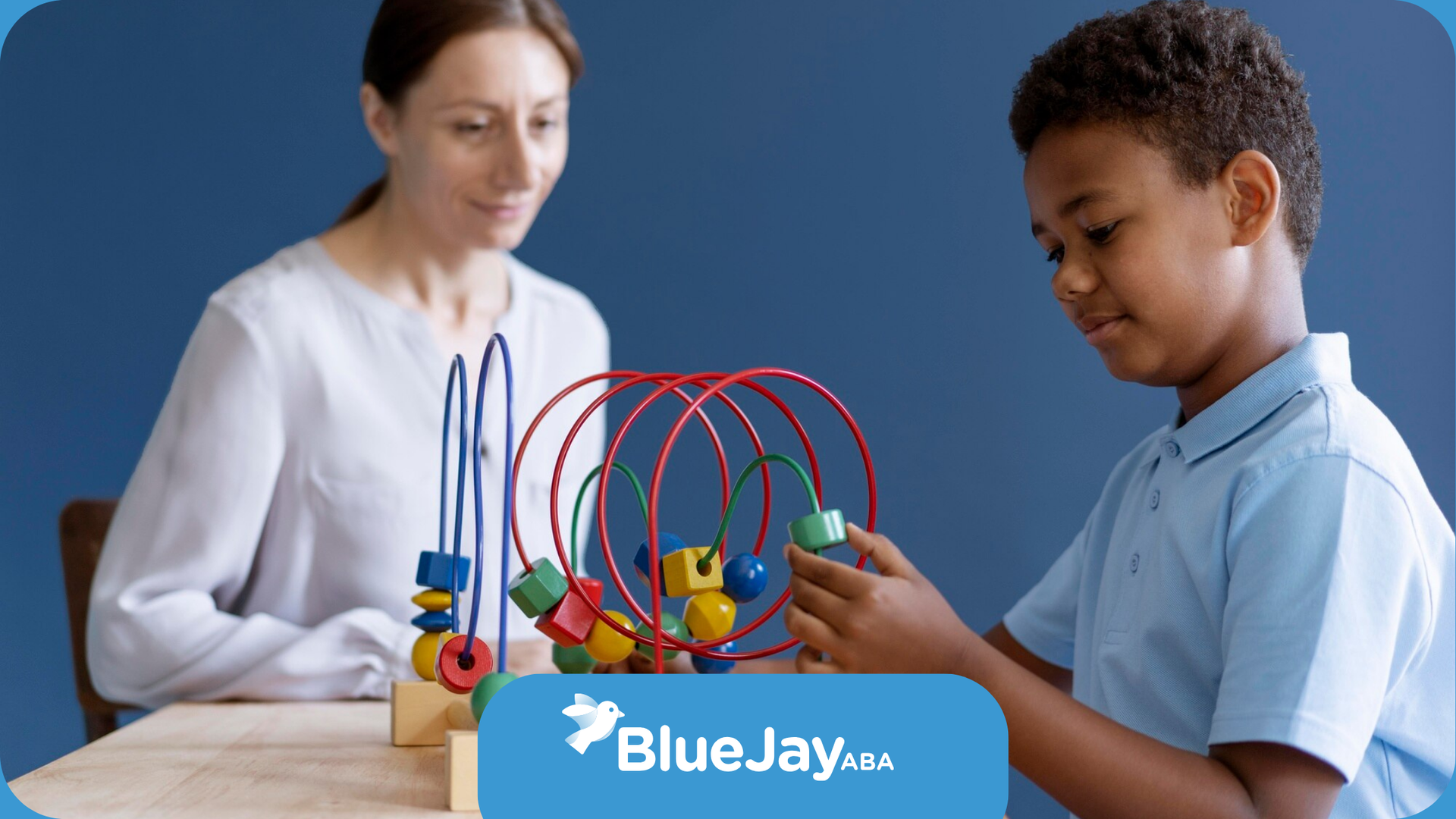How to Apologize to an Autistic Person with Empathy
Key Highlights
- Understanding is Key: Autistic individuals experience the world differently, impacting how they interpret apologies.
- Clear and Direct: Use straightforward language, avoiding figures of speech or sarcasm that can lead to confusion.
- Validate Feelings: Recognize and acknowledge the impact of your actions and the emotions of the autistic person.
- Concrete Solutions: Offer specific ways you will change your behavior to prevent similar situations in the future.
- Patience is Paramount: Allow time for processing and understanding, as responses may not be immediate.
- Be Forgiving of Yourself: Apologies are a process, and extending grace to all parties involved is essential.
Introduction
Navigating apologies can be tricky, especially when talking to someone on the autism spectrum. You should keep in mind that autistic people may communicate differently and see social interactions in their own way. It is very important to approach the situation with empathy and to understand how they feel. This can help make your apology more meaningful. Remember, it is not that autistic individuals lack empathy. It is more about giving them the clear and supportive communication they need.
Understanding Autism in the Context of Apologies
When we talk about apologies, we need to understand that autistic people think and feel in unique ways. What seems like a small issue to someone without autism can feel very big and upsetting for someone on the autism spectrum.
Communication can change this, too. Using simple and clear language is best. Autistic people may struggle with metaphorical language or hints that others use. By being aware of these differences, we can make a space where apologies can be better understood.
Recognizing the Spectrum of Autism
The phrase "autism spectrum" shows the many experiences in the autistic community. Every autistic individual is different. They have their own strengths and challenges. Therefore, there is no one-size-fits-all way to communicate or interact.
What works for one person might not work for another.
For instance, some autistic individuals may like getting a written apology. Others may value a verbal apology more. Sensory sensitivities can also differ a lot. Some may need a quiet space with few distractions. Others may be fine with more noise around them.
It is very important to understand what each person needs and prefers. This helps create an apology that truly connects with them. Think about how they have communicated in the past. Consider any known sensory sensitivities. Be ready to change your approach if necessary.
The Significance of Empathy and Patience
Empathy is very important when talking to anyone. It is even more vital when you are apologizing to an autistic individual. Try to understand the situation from their view. Acknowledge their feelings as valid and real. Neurotypical people may need to change their expectations for quick understanding or fixing the issue.
Patience is just as important. Give the autistic individual time to think about the apology and their feelings. If you rush the conversation or want a quick reply, it can lead to frustration and misunderstandings. By offering them space, you show respect and a true wish to fix the relationship.
Remember, trust takes time to build, especially when feelings have been hurt. By regularly showing empathy and patience, you create a ground for better and more meaningful communication.
Preparing to Apologize: What You Need to Know
Before you say sorry, take some time to think about what happened and the special needs of the autistic person. What way of talking works best for them? Are there any sensory sensitivities that you should keep in mind? By knowing these things, you can make it easier for them to feel comfortable and have a real, helpful apology.
A true apology is more than just saying "I'm sorry." It means recognizing how your actions affected them, showing that you understand their feelings, and giving real solutions.
Acknowledging the Individual's Experience
When you apologize, start by recognizing the unique experiences of the autistic individual. Tell them that their feelings are important and that you truly regret the pain you have caused. A direct apology that focuses on their experience helps build trust.
For example, instead of saying, "I'm sorry IF I offended you," say, "I understand that my words hurt you, and I am truly sorry for that." This clear apology shows you see their feelings and want to understand them better.
Creating a trusting environment is key for open communication. When an autistic person feels safe and respected, they are more likely to accept your apology. Make sure the space is comfortable, keep distractions low, and speak in a calm and sincere way.
Sensory and Communication Considerations
Sensory sensitivities are very common among autistic people. What seems like a calm place for some can feel overwhelming for others. When you apologize, think about the person's sensitivities. A quiet, calm environment can help. This could mean dimming the lights, reducing noise, or picking a space that feels comfortable and familiar.
Good communication depends on knowing how the autistic person likes to talk. Some may prefer clear and direct language. Others may understand better with written messages or pictures.
Keep in mind that social cues you might use, like facial expressions or tone of voice, may not be understood the same way by autistic individuals. It’s best to be clear about what you mean and what you want to say.
Crafting Your Apology with Care
When you make an apology, being sincere is very important. This is especially true for autistic individuals who value honesty and clear talk. The words you choose should be simple and direct. Avoid using confusing language. This clarity will help make sure your message is understood.
A real apology doesn’t just mean saying the right words. It shows true sorrow through your actions. It is about closing the gap in communication. You also need to rebuild trust while respecting the unique needs and views of the autistic individual.
Direct and Honest Communication
Direct communication is very important when you apologize to an autistic individual. Using clear and simple words can help avoid misunderstandings. It also makes sure your message gets through. Stay away from sarcasm, figurative speech, or unclear language that they might misinterpret.
Being honest is just as important. Admit what you did wrong. Take responsibility for your actions and don't make excuses. If you speak with honesty and a real desire to mend any hurt, they will see your sincerity.
Also, adjust your communication style to fit what the individual likes. If they like written notes, consider writing a kind letter or email. If they are better at talking, pick a good time and quiet place to speak openly without distractions.
Incorporating Specific Acknowledgment of Feelings
Empathy is important when giving an apology. It means understanding how your actions affect someone else. If you are apologizing to an autistic individual, make sure to acknowledge how your behavior impacted them. Tell them you are sorry for any hurt or distress you caused.
For instance, you could say:
- "I see that my words hurt you, and I am really sorry for the pain I caused."
- "I get that my actions made you feel disrespected, and I truly regret that."
By clearly acknowledging their feelings, you show that you want to understand their viewpoint. This helps to build empathy and can strengthen trust. Always remember, a sincere apology is about making things right and showing that you want to change for the better.
Follow-Up Actions After Apologizing
After you say sorry, keep the talk going. Communication does not stop at “I’m sorry.” Check in with them to see how they feel. Offer to listen without judging. Don't force a talk; just be there for them.
Showing that you can change through your actions is really important. A true apology means nothing if you keep hurting that person. Work hard to learn from what happened. Change how you act and show that you want to do better in the future.
Offering Support and Understanding
Apologizing is often just the first step in fixing a relationship. It is important to offer real support and understanding to rebuild trust and make the bond stronger. Let the autistic individual know that you are there for them if they need anything. This could mean having someone to talk to, someone to listen, or help with a specific situation.
Friends of autistic individuals can play a key role in promoting understanding and acceptance. It's good to learn about autism, be patient, and show care when you talk with them. Celebrate the special viewpoints and strengths of your autistic friends. By accepting neurodiversity, you make a friendlier and more supportive environment for everyone.
Remember that building strong relationships takes time and effort. Continued support and understanding after an apology can help heal hurt feelings and deepen the bond between friends.
Demonstrating Change Through Actions
Actions often speak louder than words, especially when rebuilding trust. After apologizing to an autistic individual, it's important to demonstrate your sincerity through tangible changes in your behavior. This involves identifying the specific actions that contributed to the situation and making a conscious effort to avoid repeating those mistakes.
For example, if you unintentionally said something hurtful due to a misunderstanding, commit to improving your communication skills. Consider taking a workshop on active listening or practicing clear and concise communication techniques. The table below illustrates additional examples:
| Situation | Actionable Change |
|---|---|
| Interrupted or spoke over them | Practice active listening skills and give them space to fully express themselves |
| Dismissed or minimized their feelings | Validate their emotions and acknowledge the impact of your actions |
| Made assumptions about their needs | Ask for clarification and respect their preferences |
By demonstrating a genuine commitment to personal growth and positive change, you show the autistic individual that you value the relationship and are dedicated to creating a more respectful and understanding dynamic.
Conclusion
In conclusion, it is important to understand and show empathy for people on the autism spectrum, especially when saying sorry. Patience, being aware of their sensory needs, and using clear communication are key parts of this process. A heartfelt and specific apology, along with ongoing support and real actions, shows you care and helps create better connections. By following these thoughtful and kind steps, you can create stronger bonds and promote an understanding environment for all. If you have questions or want more help on this topic, please check out our FAQ section or reach out for support.
Frequently Asked Questions
How should I start an apology to an autistic person?
Start by giving a clear apology that fits how they communicate. Let them know that you understand they are on the autism spectrum. You value your relationship with them and you want to fix any issues.
What are some common mistakes to avoid when apologizing?
- Avoid unclear words, sarcasm, or busy places that may overwhelm someone.
- Remember that people on the autism spectrum might see body language in a different way.
- Focus on using clear spoken words when you communicate.
Can you suggest ways to show understanding and support after apologizing?
Keep open communication and provide further support. Show empathy by checking in with others, respecting their boundaries, and learning about applied behavior analysis. These actions can help rebuild trust.
How can I ensure my apology is received well by an autistic individual?
- Use simple and clear language.
- Pick a quiet place that feels comfortable.
- Respect their way of communicating.
- It is important to understand autism spectrum.
- Avoid things that might lead to a meltdown.
- This is key for better clarity.
What are some signs that my apology has been effective?
Signs that someone accepts you can be small and easy to miss. You might notice better rapport, a choice to connect more, and a readiness to forgive. ABA therapy services can support this, but a real apology process depends more on true understanding and building a connection.
Related Posts








